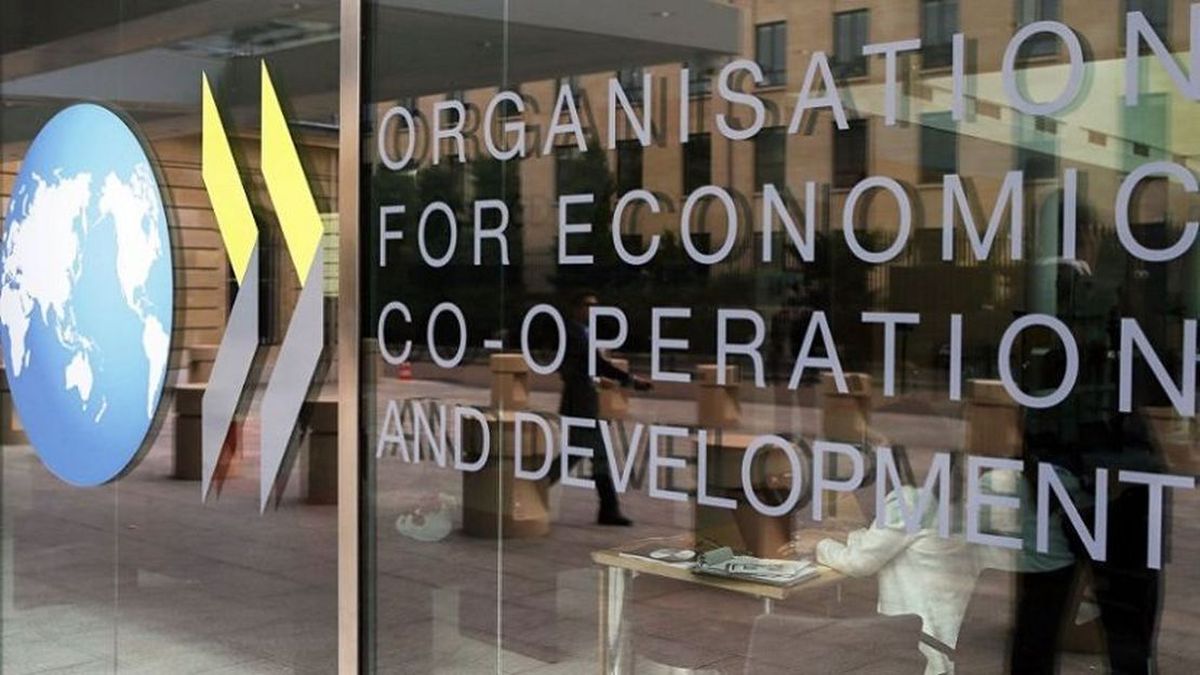“Russia’s invasion of Ukraine immediately slowed the recovery from the Covid-19 pandemic and caused the global economy to embark on a path of lower growth and higher inflation,” underscored the Economic Outlook report.
In the Argentine case, the OECD expects a growth of 3.6% in 2022 and 1.9% in 2023 and highlighted that “The recent agreement with external creditors will reduce uncertainty and help gradually reduce long-standing macroeconomic imbalances.”
Regarding the country’s risk factors, the OECD appointed “exchange controls, low reserves and limited fiscal space”, which “will weigh on investment in 2022 and 2023”.
For its part, the agency also highlighted “the full recovery of employment from the pandemic” although it indicated that “real wages remain below 2019 levels.”
At the same time, the body raised its annual inflation projections from 44.4% to 58% and explained that it is mainly due to “domestic factors” and “unanchored inflationary expectations” since “key domestic prices -such as energy prices- are decoupled from developments global”.
However, he explained that the deficit reduction and limits on monetary financing together with higher local interest rates will reduce inflationary pressures and expand local financing, in addition to reducing the exchange rate gap.
Private consumption, meanwhile, will remain “low in 2022” to then “accelerate in 2023 as confidence in the macroeconomic program grows”; while the exports “will remain solid, with the high prices of commodities”
On the other hand, he recommended “improvements in the efficiency of public spending” including the “poorly targeted energy subsidies” while maintaining and even expanding “targeted social spending.”
In the tax area, the report called for “broaden tax bases” and review “taxes and special pension regimes” to improve results and equity.
Regarding inflation in the world, the agency explained that “The persistence of problems in supply chains and further increases in energy and food prices will cause it to persist at high levels for longer than expected and reach levels not seen since the 1970s in some economies. advanced”.
Similarly, he cautioned that cost pressures recently “They would start to decline hand in hand with the impact of interest rate hikes in 2023.”
At the same time, in a gloomy tone, the OECD noted that “there is a risk of a serious food crisis, especially in the poorest economies due to high costs and the possibility of shortages”.
The projections, which according to the OECD have a high margin of uncertainty as the evolution of the war is unknown, were modified downwards in a large part of the main economies.
The Eurozone is estimated to grow 2.6% (-1.7%) this year with Germany expanding 1.9% (-2.2%) and France 2.4% (-1.8%).
While, The United States would grow 2.5% (-1.2%), China 4.4% (-0.7%), the United Kingdom 3.6% (-1.1%) and in Latin America, Colombia leads the estimates with 6.1% (+1%), while, behind, Brazil aims to expand 0.6% (-0.8%) and Mexico 1.9% (-1.4%).
Source: Ambito
David William is a talented author who has made a name for himself in the world of writing. He is a professional author who writes on a wide range of topics, from general interest to opinion news. David is currently working as a writer at 24 hours worlds where he brings his unique perspective and in-depth research to his articles, making them both informative and engaging.




